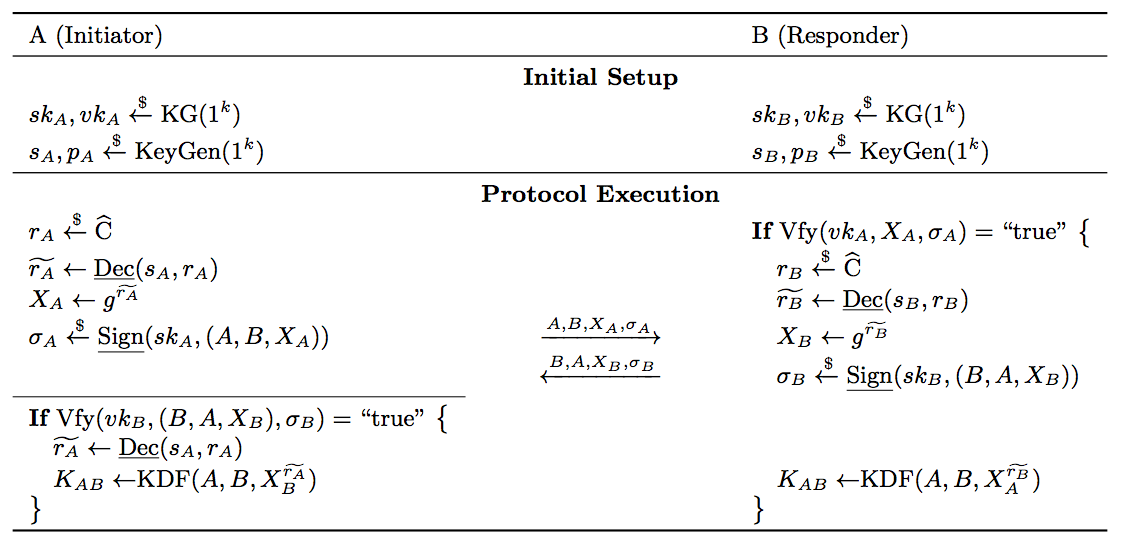
Douglas Stebila
Modelling after-the-fact leakage for key exchange
Abstract
Security models for two-party authenticated key exchange (AKE) protocols have developed over time to prove the security of AKE protocols even when the adversary learns certain secret values. In this work, we address more granular leakage: partial leakage of long-term secrets of protocol principals, even after the session key is established. We introduce a generic key exchange security model, which can be instantiated allowing bounded or continuous leakage, even when the adversary learns certain ephemeral secrets or session keys. Our model is the strongest known partial-leakage-based security model for key exchange protocols. We propose a generic construction of a two-pass leakage-resilient key exchange protocol that is secure in the proposed model, by introducing a new concept: the leakage-resilient NAXOS trick. We identify a special property for public-key cryptosystems: pair generation indistinguishability, and show how to obtain the leakage-resilient NAXOS trick from a pair generation indistinguishable leakage-resilient public-key cryptosystem.
Keywords: key exchange protocols, public-key, side-channel attacks, security models, leakage-resilient, after-the-fact, NAXOS
Reference
Janaka Alawatugoda, Douglas Stebila, Colin Boyd. Modelling after-the-fact leakage for key exchange. In Proc. 9th ACM Symposium on Information, Computer and Communications Security (ASIACCS) 2014, pp. 207-216. ACM, June 2014. © ACM.
Download
BibTeX
Funding
This research was supported by:- Australian Research Council (ARC) Discovery Project grant DP130104304
